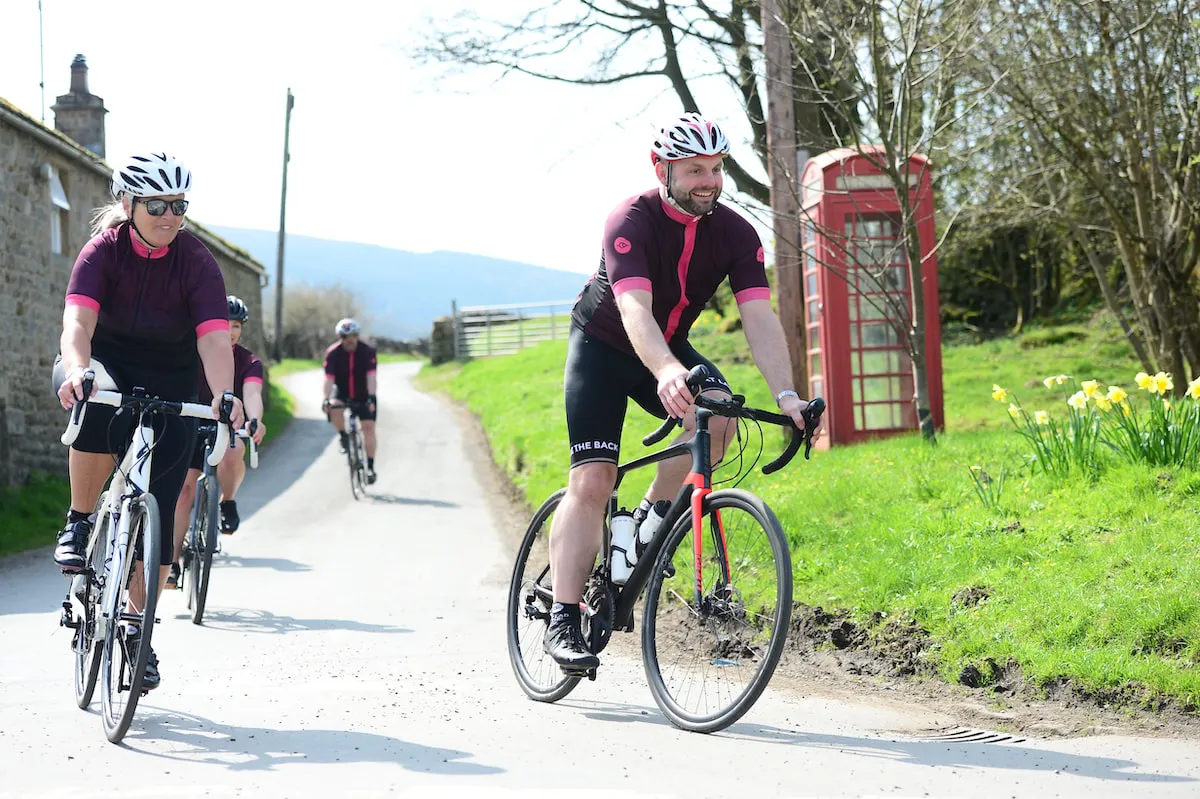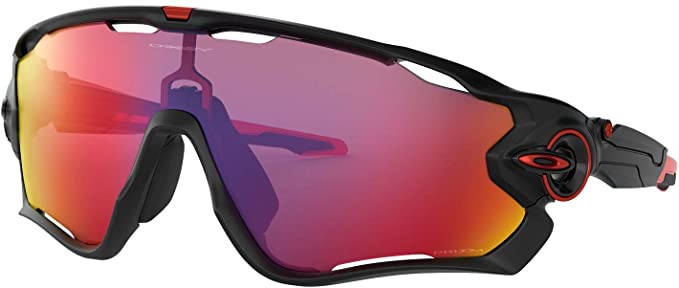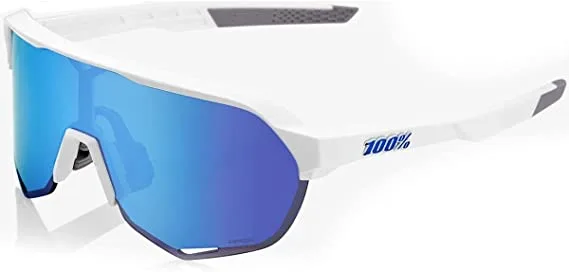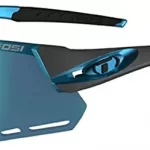Selecting the ideal sunglass lens color is one of the most critical choices mountain bikers make. The right lens tint dramatically enhances trail visibility, combats glare, and protects eyes on sunny days. As outdoor enthusiasts relying heavily on visual clarity, lens color strongly impacts how mountain bikers experience every ride. This guide dives deep on the unique benefits different cycling sunglass lens tints offer to help you see the road ahead clearly.
Balancing Light Transmission, Glare Reduction, and Versatility
The core purpose of sunglass lenses centers on balancing sufficient light transmission for visibility against adequate glare cutting and eye protection. Darker gray, brown, and mirrored lenses excel at glare and UV reduction but lighten shadows and scenery details. Conversely, yellow, orange, and clear lenses maximize lighting and contract but lack sufficient glare defenses on ultra bright days.
Ideally, mountain bikers need versatile lens tints adaptable across changing sunny conditions during a ride while preserving trail hazards visibility. Photochromic and polarized lenses aim for this flexibility but have some limitations. Ultimately every lens color option requires prioritizing either enhanced lighting or reduced glare along with versatility tradeoffs.
Gray Lenses – A Versatile Balance of Definition and Glare Cutting
For many cyclists, gray lenses offer an ideal versatility blend both on and off the bike. By balancing light transmission and glare diminishment moderately well, gray lenses adapt neatly across variable sunny conditions. This makes them a popular all-purpose choice for mountain bikers.
With more lighting than dark lenses yet less glare protection than mirrors, gray hues preserve excellent terrain detail and depth perception. Obstacles like loose rocks, raised roots, and hole edges maintain definition without becoming washed out. This ensures good environmental contrast on most trails minus heavy shade coverage or glare bombardment.
Therefore gray lenses shine on partly cloudy days by adjusting nicely as light shifts. Their darker tint tackles harsh glares when the sun emerges while sliding transparently into increased shadow visibility when clouds dominate. Versatility and visibility unite satisfyingly with gray.
The moderate darkness does mean very bright sunlight overpowers gray lenses as all shadows disappear. Similarly, heavily forested areas challenge grays lacking enough light boosting. But for adaptable illumination across constantly changing mountain descent speeds and foliage densities, gray lens sunglasses work excellently.
Brown Lenses Heighten Definition with More Blue Light Filtering
While gray lenses seek a versatile balance, brown cycling sunglass lenses prioritize enhanced definition through filtering more blue light. By concentrating on visual boosting, browns excel at clarifying terrain contrasts, shades, and obstacle shadows for improving hazards detection.
Greater blue light screening naturally creates a slight yellow/amber lens tint in browns lacking gray’s color neutrality. But this tint shift dramatically improves perceived resolution, dynamic range, and detail pop.Shadows under rocks and within forested sections appear deeper with more defined edges and shapes. Textures on dirt, stone, and wood surfaces also gain dimensionality, allowing mountain bikers to better gauge trail properties.
Additionally, blue light filtering aids visual comfort and acuity by screening the most intense visible light striking the eyes. This reduces cumulative eye strain and fatigue over multi-hour rides under relentless sunlight. Mountain descents through wooded clearings with continuously intermixed sun glare and shade benefit enormously from enhanced detail in shadows.
The improved lighting separation does darken overall visibility compared to lighter grays though. Brown lenses thus work best in abundant sunshine amidst intermittent shade rather than overcast days where they lack sufficient transmission. But the impressive terrain enhancement makes brown lenses perfect for mountain runs where spotting obstacles early matters greatly.
Yellow Lenses Maximize Lighting and Trail Hazards Visibility
Just as brown lenses specialize in sharpened definition, yellow cycling sunglass lenses prioritize maximized lighting and illumination. With the highest light transmission rates across lens tints, yellows deliver unparalleled brightness and contrast for spotting rocks, roots, and divots rapidly.
This extreme daylight bias reveals every terrain detail and imperfection with heightened lucidity even in forested sections. Shadows retain edges but appear less dark to sharpen definition within shaded areas. Textures and surface changes visually jump out for quicker recognition while retaining color balance and accuracy.
By preserving such lighting vibrancy and illumination intensity, yellow lenses escalate trail hazards visibility crucially. Mountain bikers zipping over rough downhill slopes detect rocks, stumps, and obstacles far sooner due to enhanced acuity. Yellow lenses thus build tremendous riding confidence with their light maximizing talents.
But the extreme brightness comes at the cost of meager glare defense however. Harsh sun reflections can overwhelm yellow lenses lacking sufficient darkness or polarization. Similarly, the perpetual lightness prevents versatility transitions across dimmer conditions. Still for spotting hazards emphatically amid sunshine, yellow lenses are unmatched.
Orange Lenses Optimizing Trail Visibility with Color Boosting
As yellow lenses specialize in light amplification, orange sunglass tints seek heightened terrain visibility through targeted color contrast improvements. By building on yellow’s brightness foundation yet shifting the visible color mix favoring warmer mid-range hues, orange lenses uniquely fine-tune mountain biking visuals.
This careful color recalibration adds definition and separation across dirt, stone, wood, and foliage textures. Surface irregularities stand out better against background settings as local contrast notches higher in the most crucial mid-level bands. Alongside magnified brightness, the added color separation creates almost 3D-like trail scenery with pronounced depth and distances.
Consequently, orange sunglass lenses allow mountain bikers to instantly spot rocks, roots, holes, and other dangers more quickly due to enhanced color isolation. Obstacles visually jump out from surrounding dirt and grass with urgent vibrancy demanding immediate attention. Logging trails through dense mixed forest environments with endless variability see hazards detection benefits soar.
Much like yellow lenses though, oranges transmit glaring sunlight quite readily lacking sufficient tinting depth. Yet the unrivaled terrain boosting makes orange sunglass lenses ideal for downhill runs or obscured visibility sections to maximize details fast. For those occasions, orange hues deliver.
Green Mirror Lenses Adding Glare Defense with Terrain Sharpness
While the previous lens options concentrated solely on maximizing lighting and visibility, green mirrored lenses incorporate meaningful glare protection as well. By balancing light transmission and reflection diminishment, green mirrors fuse hazards clarity with anti-glare versatility effectively.
The partial mirroring helps cut bright sunlight considerably while retaining enough lighting to continue spotlighting rocks, branches, and holes with precision. This moderates shadows slightly for better visibility into shaded regions yet maintains sufficient contrast across illuminated zones. Details remain crisp and sharp amidst fluctuating environmental luminance.
Additionally, the mirrored surface generates extra durability benefits protecting interior lens layers from scrapes, scratches, and debris impacts. Mountain bike traces through overgrown forests, thick grasslands, and sandy washes see mirrored lenses retain optical clarity longer as protective barriers.
Green tinting itself also amplifies natural color separation for reiterating the vividness of autumn leaves, conifer/deciduous tree differences, and rich earth tones against underbrush. This further heightens the terrain variability echoes discussed regarding orange lenses through isolated color sharpness.
Consequently green mirrored lenses fuse advantages from across specialized options into a single multi-purpose solution. They cut glare nicely while retaining definition, support shifting lighting adaption, and isolate colors for maximized visibility. For versatile mountain biking needs, green mirrors check every box.
Red Mirror Lenses Targeting Trail Clarity with Contrast Improvements
Just as their green counterparts aim for versatility consolidation, red mirrored cycling sunglass lenses further boost flexibility by targeting enhanced visual contrast. The partial red tint inherently screens more haze and atmospheric distortions compared to neutral grays for sharpening zone separation.
This allows mountain bikers to distinguish far terrain patterns compared to close dangers more instantly without heavy blurring between layers. Hazards leap forward as foreground advance warnings while distant trail curves shift appropriately rearward. Spatial arrangement becomes more defined as red mirrored lenses divides space into prioritized tiers automatically.
Additionally, red biasing adds warmth slightly for extra color separation benefits similarly to orange and green options. Yellow and brown earth tones visually divide from green plants and gray stone textures more prominently. Tiny surface pebbles stand out better against dirt walls as colors disassociate more absolutely. This color isolation supplements the layered effects for further maximizing detail pop.
Consequently, red mirrored lenses optimize lighting transmission to preserve definition while totally eliminating haze or glare disturbances. They sharpen vision acuity for detecting hazards faster while sustaining long ride comfort through distortion elimination. For mountain bikers desiring visual purity across changing sunny settings, red mirror glasses deliver beautifully.
Photochromic Lenses Self-Adjust Across Sunshine Intensity Shifts
Thus far all the sunglass lenses outlined trade some lighting transmission for glare cutting or vice versa to balance visibility and eye comfort. But photochromic lenses take a uniquely adaptable approach by automatically optimizing tint depth based on ambient brightness.
Light-reactive chemical coatings applied during manufacturing shift gradient density responding to sunlight exposure much like human eye pupils expand and contract. Yet unlike gradual manual pupil changes, photochromic lenses darken rapidly then lighten quickly as well to match luminous intensity forcefully.
In bright sunlight, these lenses nearly replicate mirrored or polarized lenses with very heavy tint for glare protection. Shadowed zones retain visibility as tint density lightens precisely matching needs.
Balancing Lens Tint with Proper Frame Size and Shape
While lens color strongly impacts visibility, contrast, and glare defense, the cycling sunglass frames greatly affect coverage area and peripheral vision. Selecting frames with appropriate shape and dimensions for your helmet and face proves vital as well.
Many sunglass brands offer interchangeable lens options to swap tints easily while retaining the same frame fit. But most frames angle lenses for aerodynamic performance and only shield the front facing direction effectively. In contrast, proper cycling eyewear wraps around the temples further to increase shielded angles.
These wraps protect off-axis sunlight from sneaking around straight temple frames to create distracting reflections during descents. By enclosing more area, contrast remains higher looking sideways or upwards to spot ledges, overhangs and tree branches faster.
For mountain biking, maximizing shielding through frame shape and lens surface area grows in importance to match needs. While slimmer frames that integrate with road cycling helmets work well enough, prioritizing visibility and safety favors selecting larger wraparound cycling eyewear instead.
Anti-Fog Treatments Keep Lenses Clearer Longer
Another helpful aspect that interacts positively with lenses involves permanent anti-fog treatments applied during manufacturing or via aftermarket spray coatings. Fog buildup impairs visibility by blocking light transmission and diffusing definition.
Most quality cycling sunglasses receive excellent hydrophobic treatments making water bead up and roll off lenses without streaking or fogging. But lower cost options often lack sufficient chemical coatings. Cycling glasses like Oakley Radar are expensive but very capable in this area.
Seeking glasses with durable water repellency and anti-fogging properties ensures lenses promote clarity across temperature and humidity shifts when transitioning from bright, hot sunshine into cool, mossy forest shade rapidly. The trails appear visible consistently without temporary fog obscuring details dangerously.
So when comparing lens offerings, prioritizing additional protective treatments provides long-lasting reliability and safety beside just tint levels and colors. Clearer sight lasts longer through technologies guarding glass surfaces against not only scratches and debris but also temporary moisture impediments.
Summary Points for Picking Sunglass Lenses
When selecting mountain biking sunglass lenses, the ideal choice depends heavily on balancing favored lighting transmission, glare reduction needs, versatile adaptability across changing conditions, and any specialized contrast or visual boosting properties.
Some key tradeoffs include:
- Gray lenses providing a versatile mix of visibility and glare defense
- Brown lenses maximizing obstacles definition through added blue light filtering
- Yellow lenses optimized for amplifying terrain details through extreme brightness
- Orange lenses isolating colors for improving textural contrasts with vibrancy
- Green and red mirrored lenses fusing glare protection with lighting transmission
- Photochromic lenses self-adjusting density responding to brightness levels
Additionally, the frames must provide sufficient coverage and peripheral vision to match contrast gains from specialized lens tints. Seeking wraparound angular designs boosts environmental awareness and hazards detection alongside lenses.
Finally, anti-fog and hydrophobic treatments help sustain clarity across temperature/humidity shifts when transitioning between sun and shade. Investing in lasting optical protections ensure the eyes rely on lenses for visibility consistently.
Evaluating sunglass products across these aspects provides mountain bikers with ideal vision enhancement specialized for their riding needs to Spot trail details reliably. Having the right sunglasses tuned perfectly makes every ride more enjoyable.









